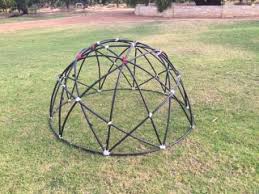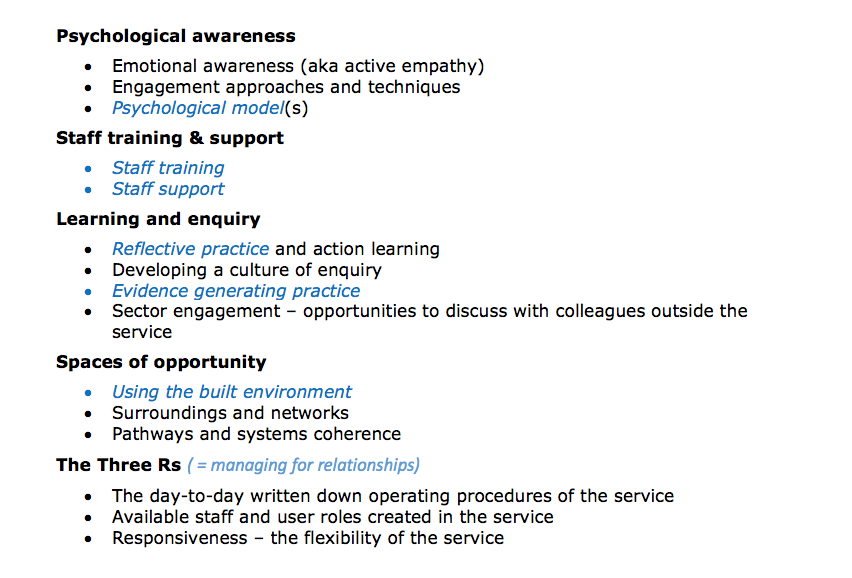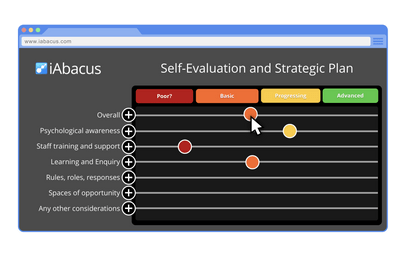In essence, the PIEs concept is a holistic model. It aims to see services as wholes, made up of many parts with a synergy between them. Or a missed opportunity for synergy.
In essence, the PIEs concept is a holistic model. It aims to see services as wholes, made up of many parts with a synergy between them. Or if not, there is a missed opportunity for synergy; but it’s never too late to start..

The PIEs 2.0 framework then attempts to tease out the main features that we have found, in fairly successfully integrated services, or networks of services. Here we have the ‘Big Five’ themes; and within each, a number of more specific practice elements.

But there is – there actually should be – a lot of overlap between all these areas. They connect, support each other. Each of the main themes is just a different way in to approaching the whole.
The Pizazz process then takes this framework – the ‘Big Five’ main themes, and all their more specific practice elements – and takes you through them as a process.

But still, all those areas and elements are inter-connected. So don’t worry too much about what ‘properly’ goes where. If it all fits together, there may be a fair amount of duplication, the same activity touching on several themes. For a little gentle advice on this, see : ‘My cat is a built environment?’ on the PIElink (link to go HERE)
NB: When you come to the PIE Abacus, though, you will find that it’s best to have a little more consistency between all the services that you are looking at, in order to compare and share the learning.

But still you can decide for yourselves, within each community or practice = agency, network, (or perhaps a research project)- how you want to tailor your descriptions to suit your work.